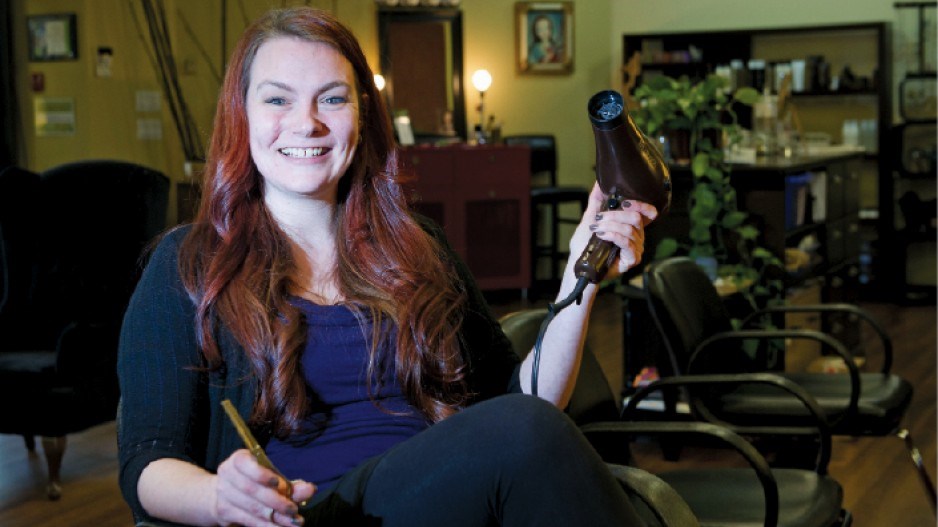Clover Hair Salon bills itself as one of Vancouver’s most sustainable places to get a haircut. It has good reason to: by using a comprehensive waste management system Jennifer Wanderleij, owner of the downtown shop, has also been able to bring the shop’s waste aversion to 98%.
It’s a significant accomplishment. By comparison, according to a 2011 waste management report by Metro Vancouver, the average household creates around 1,000 kilograms of waste per year; Wanderleij has her business down to just 20 kilograms. Green Workplace Consulting, a Vancouver-based business that provides fee-for-service consulting and workplace sustainability training, helped Wanderleij with her green operations to avoid practices that see many other salons have of discarding what could otherwise be recycled.
“We’ve exceeded the criteria for a green workplace for monitoring our footprint, by not printing things, by recycling what we can, doing energy efficiency upgrades, composting, and [greening] basically anything that goes on here,” said Wanderleij. Rather than using the somewhat simplified, traditional separation of recyclables, she’s implemented a more comprehensive process that includes the separation of plastics into groups of their seven different classifications. She even composts cut hair, which is picked up by gardeners who use it as an animal repellant.
“It’s a little more time consuming but we’ve whittled it down to an easy routine so we hardly notice,” she said. Anyone looking in from the outside might see an arduous, complex system, but once it was in place, said Wanderleij, learning to follow it turned out to be just like any other task, and staff quickly bought in to the cleaner operations.
It wasn’t easy to get started, she said, and it took a lot of work to find the private companies to pick up the various materials. Their services also come with a cost.
“There are monthly charges for composting and recycling alternatives - it’s the cost of maybe one or two of my clients,” she said. But that cost is offset by the fact that the designation draws clients in. “[It’s] probably the reason given by more than 50% of our new clients. [It] holds a lot of appeal.”
Wanderleij’s environmental mindset isn’t unique for Vancouver’s small businesses. Kimbo Design, a Vancouver graphic design company, has also taken steps to green its operations. It recently won a Green Dot Award for a project it completed for a signage campaign promoting energy conservation. The Green Dot Awards recognize businesses that have exceptionally high environmental standards, and Kimbo was noted for a combination of sustainable design service and the sustainability of the materials used in the project.
“Classic designs have a lasting impact on consumers,” said Kim Pickett, principal and creative director. “Our goal is to create longevity. This saves the client money while reducing environmental impacts.” The industry poses its own challenges when it comes to using sustainable products. It’s one of the reasons Kimbo works closely with its printer, ensuring it has ethical certification, that it uses environmentally friendly inks, and that it runs as close to carbon-neutral operations as possible.
Printing, said Pickett, is where the graphic design process can make good headway in reducing its carbon footprint. But the choices aren’t just in the kinds of ink to be used. The materials on which they print also pose significant environmental impacts.
“Something might not be a sustainable material but then you have to weigh that against other factors that come into play,” said Pickett, such as longevity and durability. Usually, she said, longevity in products is the goal, and that can be a balancing act because some more environmentally friendly products degrade faster, resulting in a need to replace them sooner, and that has an impact as well.
Those considerations have changed the methods by which people in her industry approach projects.
“Before, we would think about it in the printing stage and that would [now] be too late. So we’ve moved that into the very first stage.” And although there may be some elevated costs in the materials and processes used in the design, said Pickett, the market has become more excited about purchasing environmentally friendly products.
“It [will] be more profitable for the client because everybody is buying a green option these days.” •




